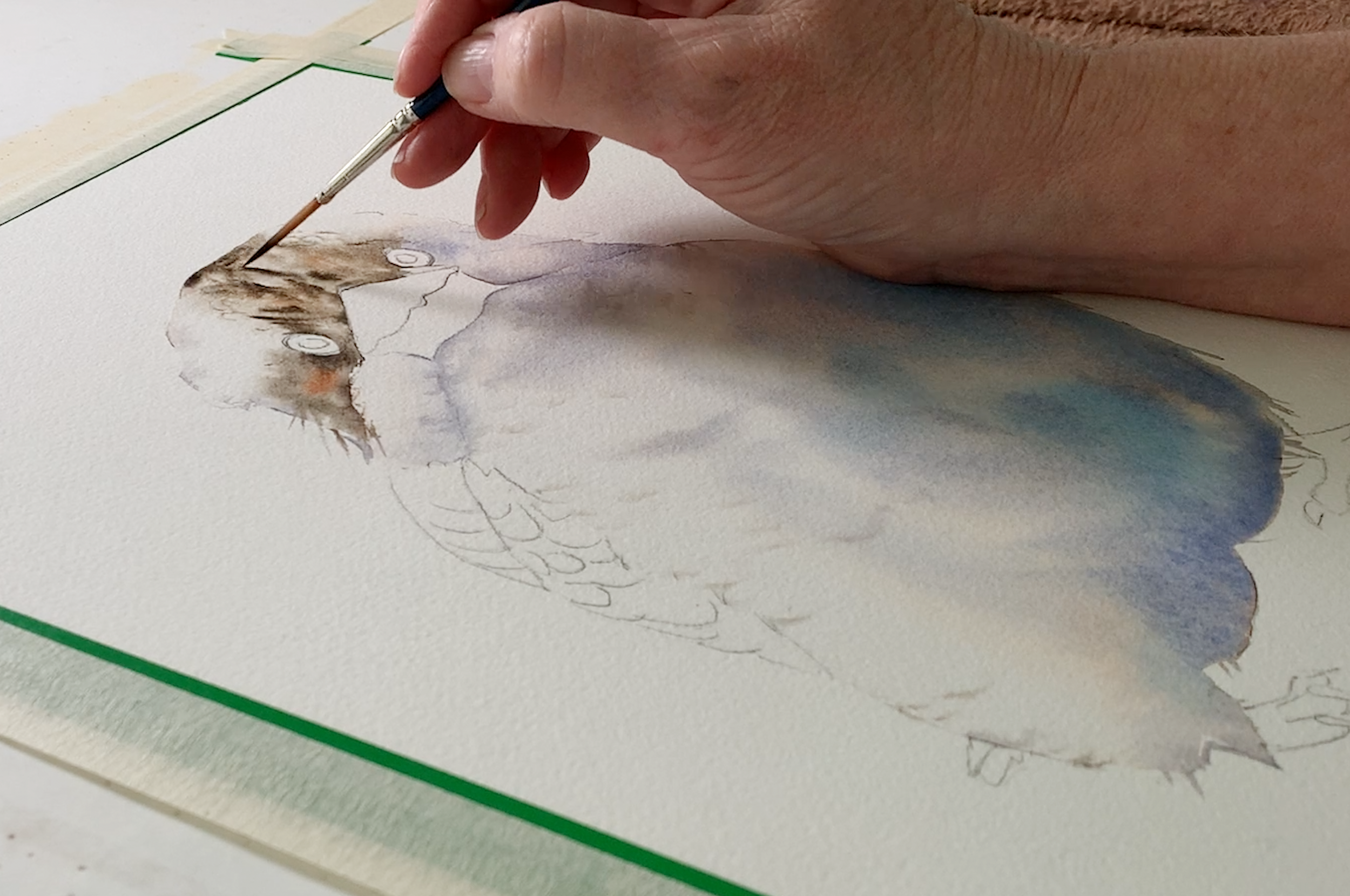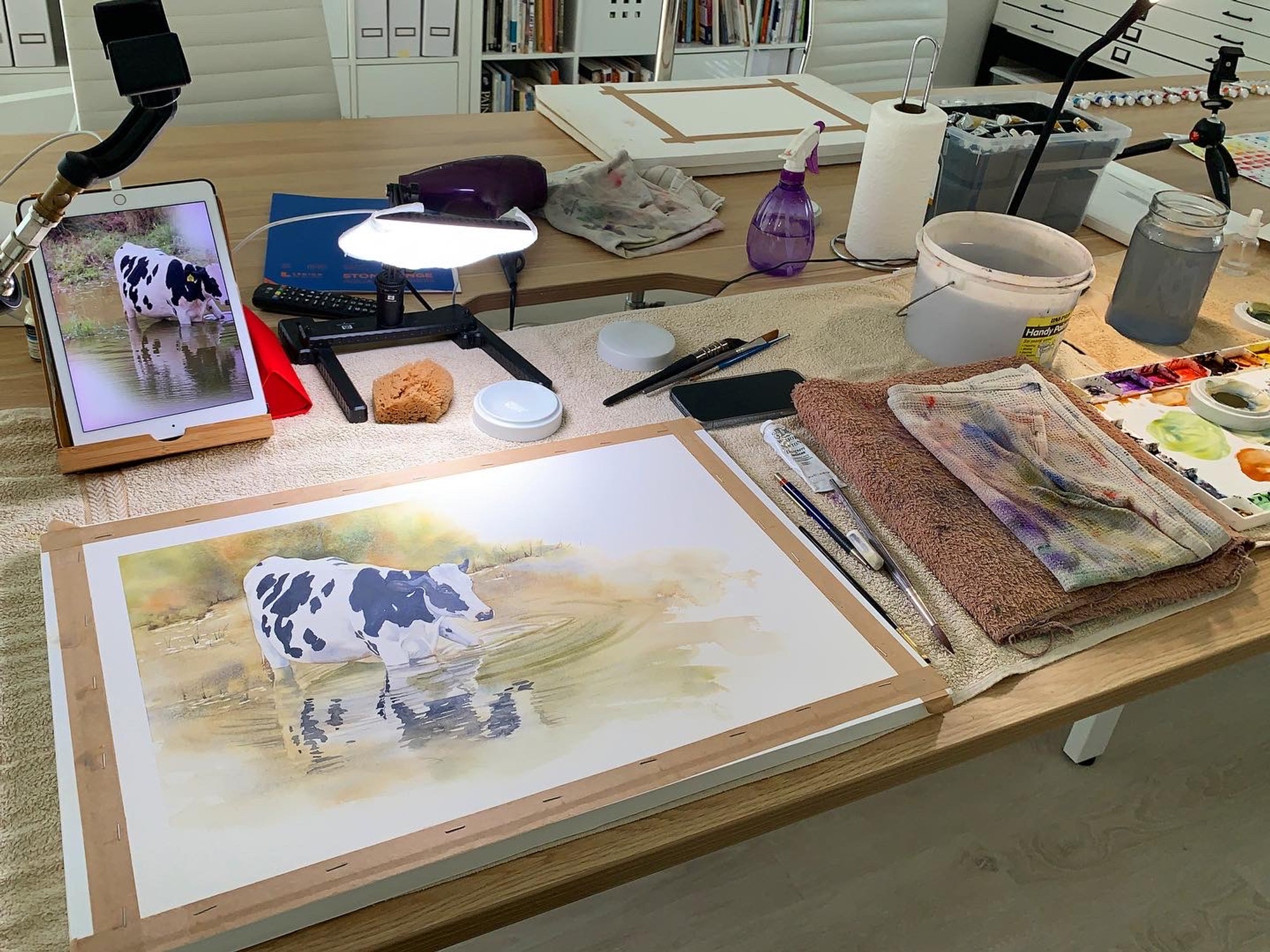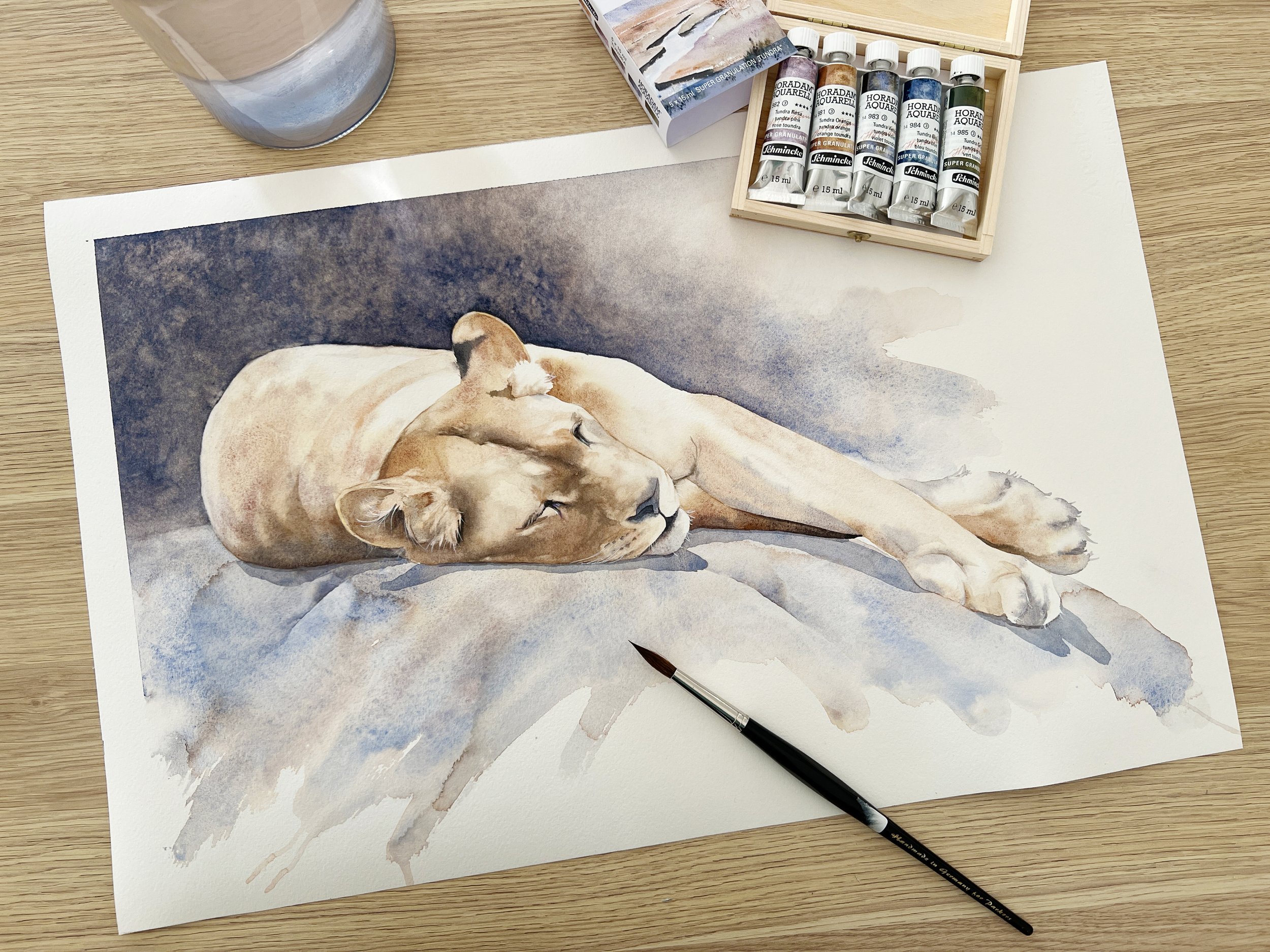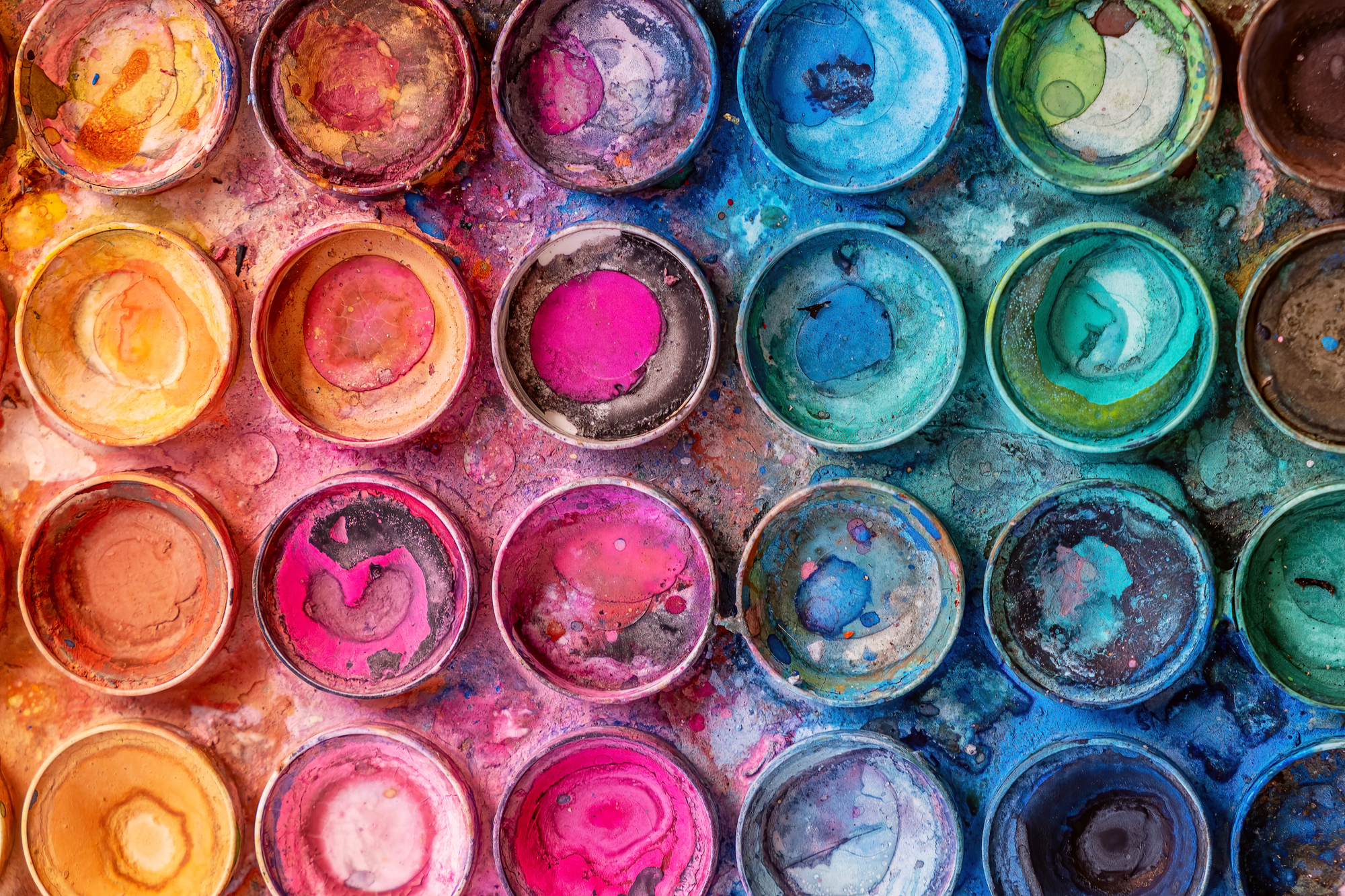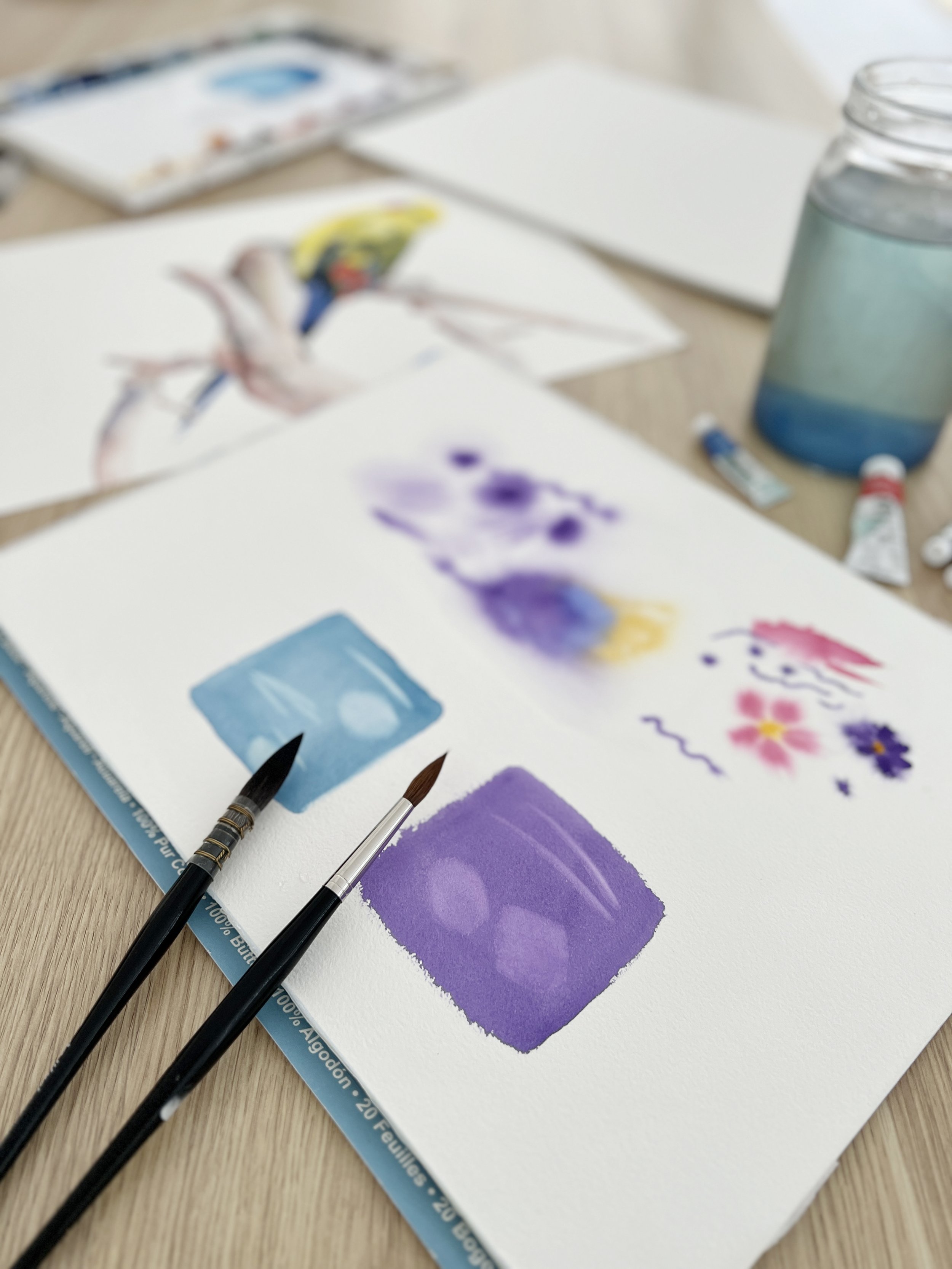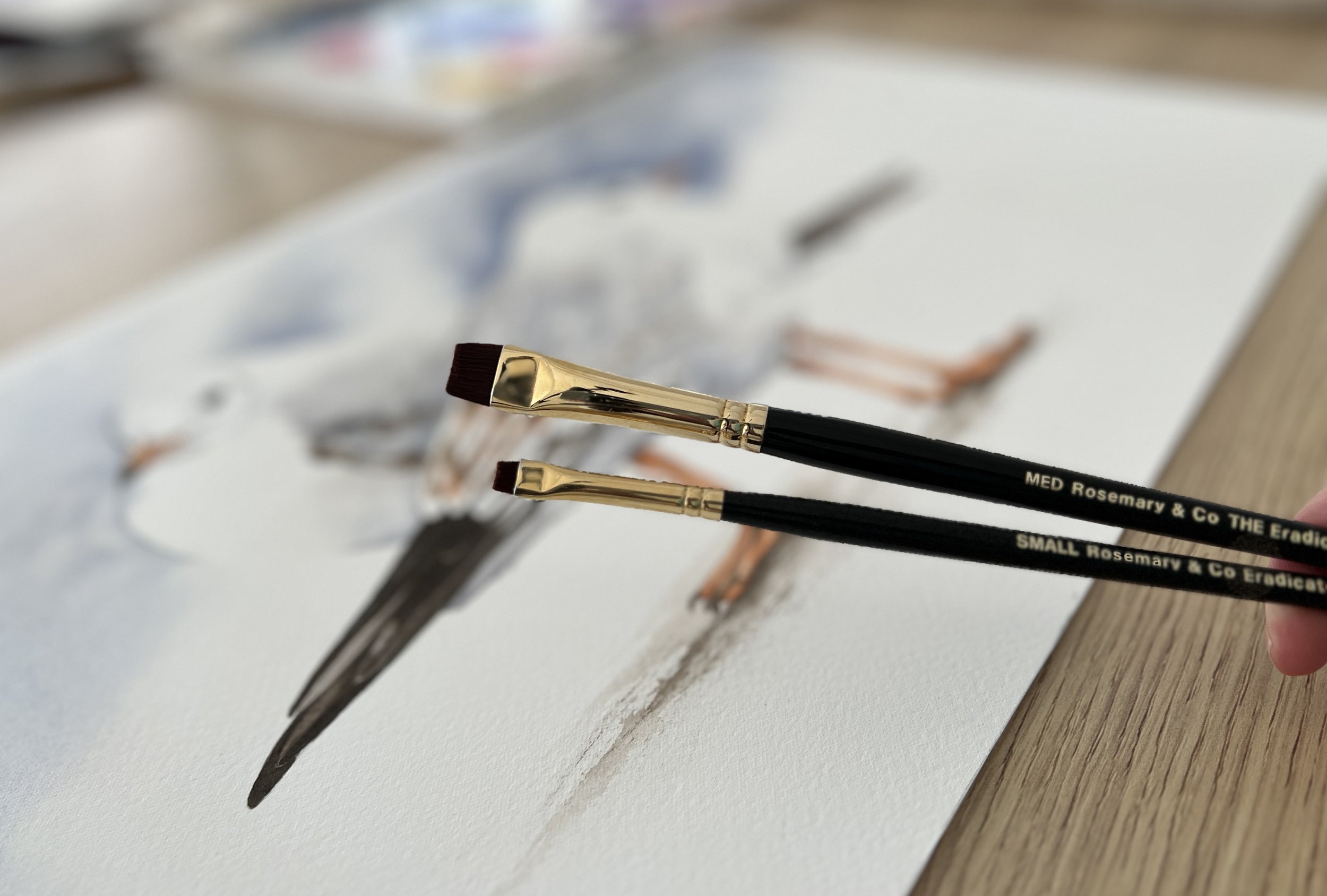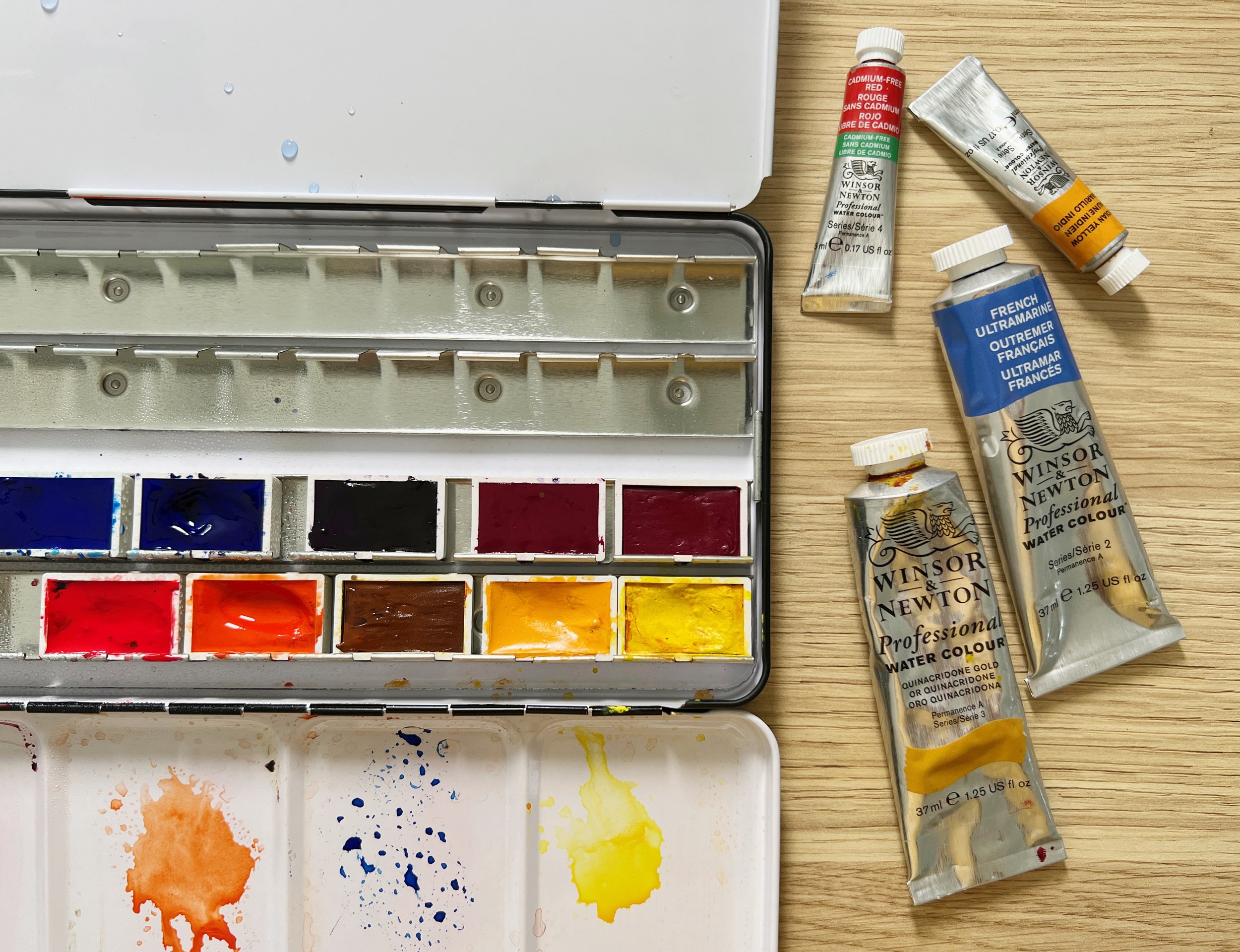To test both of these mediums, I took two glasses and used two pipettes. In one glass, I put 5 drops of gum arabic, and in the other, I added 5 drops of ox gall. Then, I painted rectangles of each solution in my watercolour diary, alongside a rectangle using just plain water. I watched them dry, and indeed, the rectangles with the mediums mixed into the water stayed wet longer than the rectangle with plain water. However, the difference in drying time was marginal. Nevertheless, I was still hopeful that these mediums would make a difference to blending and drying times when I was painting.
Read MorePainting in watercolour is magical! I became captivated by it in 2011, and my excitement for it has not waned since then.
With its delicate washes, amazing luminosity, and unpredictable nature, once watercolour has you in its spell there is no turning back. Every brush stroke becomes an adventure as you watch the wet paint dance over the paper. There is no other medium like it.
Read MoreThe easiest way to tell whether a watercolour pigment is granulating is to look at a colour chart of the paints you use. The paint manufacturers indicate on their charts whether a pigment is granulating or not. You can buy the charts or you can go online and download them from the paint manufacturer's website.
Read MoreIt is possible to use gouache and watercolour together in a painting, but it is recommended to apply gouache towards the end of the painting process due to its reactivity with water. Also, as I mentioned, gouache is an opaque medium that can cover watercolour, whereas watercolour is transparent and cannot cover gouache.
Read MoreI find painting on watercolour blocks to be a frustrating process. Despite my best efforts, I often end up with puckered paper and the resulting hills and valleys make for an unpleasant painting experience. I paint with a lot of water though, so maybe if you paint with a drier painting process you might find them suitable to paint on.
Read MoreThis brush is perfect for creating highlights on a watercolour painting after the paint has dried.
It’s a flat, stubby brush with stiff bristles. It’s stiff enough to remove the dry paint but soft enough to not damage the paper.
Read MoreOne major difference between pan paints and tube paints is their form of packaging. Pan paints come pre-dried in a plastic or metal container where they can be easily stored, while tube paints are packaged in small containers with a twist-off cap that contains wet paint.
Read MoreKnowing these pigment codes can help you identify specific colours and their properties, including lightfastness, opacity, granulation and staining qualities. This information can be invaluable when selecting watercolour paints to create your artwork. It also enables you to mix colours accurately and hopefully achieve the desired results every time.
Read MoreThe two most popular types of paper for watercolour painting are cotton paper and rag paper. While the terms "rag" and "cotton" are often used interchangeably, there are slight differences between the two.
I’m going to get a bit technical here so bear with me.
Read More